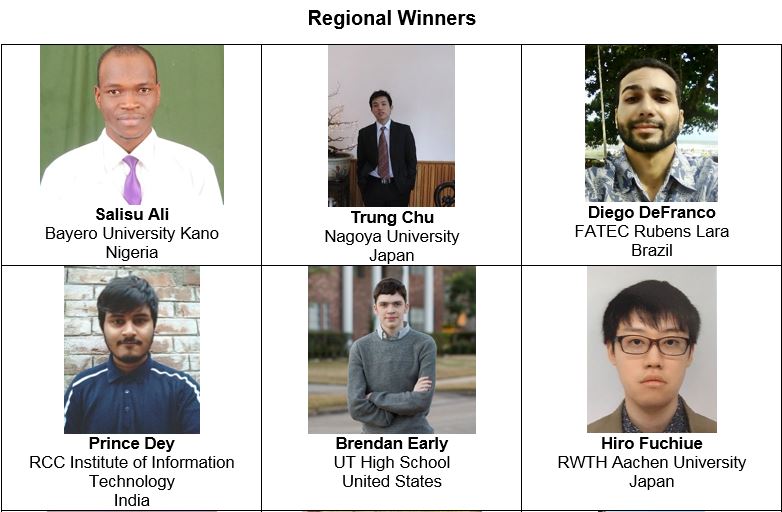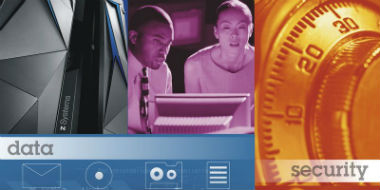Think 2018
Millennials Master the Mainframe
March 15, 2018 | Written by: Ross Mauri and Brian Collins
Categorized: Think 2018 | Z
Share this post:
When it comes to young people in 2018, what could be more fun than the hottest mobile app or video game? For more than 17,000 of them, it’s the mainframe computer.
That’s how many bright young minds from around the world participated in our annual Master the Mainframe contest this year.
In this contest, students are introduced to the enterprise systems behind their smartphone apps and gain hands-on experience designed to inspire interest in pursuing science, technology, engineering and math (STEM) careers. Master the Mainframe is an introduction to programming and application development competition designed to teach students how to code and build new innovations using the mainframe.
 Run by AngelHack, a female-owned, female-majority company with a developer community of 150,000, the competition is sponsored by the IBM Z Academic Initiative, which has provided mainframe education and resources to students at more than 1,000 schools in 70 countries. By participating, students learn, prepare for careers and have the opportunity to win prizes.
Run by AngelHack, a female-owned, female-majority company with a developer community of 150,000, the competition is sponsored by the IBM Z Academic Initiative, which has provided mainframe education and resources to students at more than 1,000 schools in 70 countries. By participating, students learn, prepare for careers and have the opportunity to win prizes.
 Rules of the Game
Rules of the Game
Master the Mainframe is a three-round, challenge-based contest with increasingly difficult programming assignments that move from basic engagement with the mainframe to writing a program that solves a real-world problem using multiple programming languages. This year, we challenged contestants to create their own applications that dealt with flour, oil and sugar using more than 600 different companies’ data that needed to be sorted and tracked. They needed to translate multiple data files into dynamic applications that could provide business insight using the concepts and languages they learned in Part 1 and 2 of the contest.
This year’s contest drew the largest  turnout since the contest’s inception in 2005. We had twice the number of countries represented from previous years (now more than 120 countries across six continents), 80 percent of registrants were new, and 23 percent were female. It was also the first truly global competition, rather than individual regional contests.
turnout since the contest’s inception in 2005. We had twice the number of countries represented from previous years (now more than 120 countries across six continents), 80 percent of registrants were new, and 23 percent were female. It was also the first truly global competition, rather than individual regional contests.
We’re pleased to congratulate this year’s winners!
The strong global participation in this year’s contest confirms that young people are increasingly intrigued by the significant role the mainframe plays as the IT backbone of 92 of the top 100 worldwide banks, the 10 largest insurers, and six of the 10 top global retailers – as well as powering most of the world’s ATM transactions.
More importantly, they see mainframe skills as a path to a good-paying job and career path. Today, Glassdoor lists more than 6,000 jobs in the mainframe field. To help match this new talent with available jobs, IBM unveiled Talent Match, a new service that directly connects clients with qualified, validated mainframe talent. Employers simply register to the Talent Match service to find ideal candidates by skills, verified IBM digital credentials or location, then review and connect with the right candidate after viewing their profile and social media links.
For more than five decades, IBM has continuously reinvented the mainframe to address the biggest challenges of today and tomorrow. The current generation, IBM Z, delivers breakthrough data encryption that powers emerging workloads such as blockchain, machine learning, DevOps and instant payments. IBM grew mainframe revenue 71 percent year-to-year in the fourth quarter of 2017.
Whether participating in a global hackathon or trying out new code patterns, the mainframe continues to attract innovative developers at every level of engagement. This is a field that is growing in demand and opportunity.
Learn more about the IBM Z Academic Initiative and Master the Mainframe contest.

General Manager, IBM Z

Chief Marketing Officer, AngelHack
IBM, CA Pair to Bring the Power of the Mainframe to the Cloud
For companies all over the world, the power of the mainframe is critical to the success of their enterprise transformations. As they transform toward cloud deployment models, many rely on the traditional strengths of the mainframe to maintain secure, reliable, and scalable computing. And for good reason. For example, nearly 80 percent of all enterprise […]
